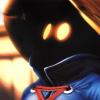Hello everyone,
so for the past few days i have been implementing fog of war mechanics to my game. and i made it work, which is nice. But i did not feel satisfied with the way it looked.
So here is my question. how can I have a smother fog of war that looks like this?

this is how i implemented. I made a 512x512 map with a 32x32 tile size. i filled the map with a black tile and i set all the cells in my map to unexplored. when a unit moves through the map, I set that cell to explored and I stop rendering the black tile in that particle cell of the map.






